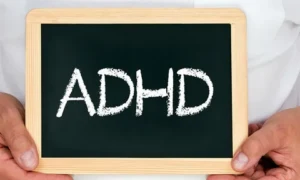Chiropractic treatment has been a subject of debate and misconceptions for many years. While some swear by its effectiveness, others remain skeptical due to prevailing myths and misinformation. We aim to debunk the common misconceptions surrounding chiropractic care and shed light on the science behind this alternative healthcare approach.
Understanding Chiropractic Care:
- Dispelling the Myth of ‘Cracking’
One of the most pervasive misconceptions about Chiropractic Treatment revolves around the audible cracking or popping sounds often associated with adjustments. Contrary to popular belief, this sound is not bones cracking or breaking. Instead, it is the release of gas bubbles in the synovial fluid when joint spaces are manipulated. Understanding this mechanism can help demystify the process and alleviate fears associated with the noise.
Chiropractors Aren’t “Real” Doctors:
- Addressing the Credentials
Another common misconception is that chiropractors are not real doctors. In reality, chiropractors undergo extensive education and training comparable to that of medical doctors. They earn a Doctor of Chiropractic (DC) degree after completing a rigorous program that includes anatomy, physiology, pathology, and various chiropractic techniques. Chiropractors are also required to pass national board exams to obtain their license.
Chiropractic Care is Only for Back Pain:
- Expanding the Scope
While chiropractors are widely known for treating back pain, their expertise extends far beyond that. Chiropractic care encompasses a holistic approach to healthcare, focusing on the musculoskeletal system and its impact on overall well-being. Chiropractors can address issues related to headaches, joint pain, sports injuries, and even contribute to preventive care by promoting a healthy spine and nervous system.
Chiropractic Treatments are Risky:
- Understanding the Safety Profile
Safety concerns often deter individuals from seeking chiropractic care. However, when performed by a licensed and experienced chiropractor, adjustments are generally safe. Chiropractors undergo rigorous training to assess the patient’s health history, perform thorough examinations, and tailor treatments to individual needs. Serious complications are rare, making chiropractic care a viable and safe option for many.
Chiropractors Only Use Spinal Adjustments:
- Exploring Diverse Techniques
Spinal adjustments are a hallmark of chiropractic care, but it’s a misconception that they are the only technique in a chiropractor’s toolkit. Chiropractors employ a variety of methods, including soft tissue manipulation, stretching exercises, lifestyle counseling, and even nutritional advice. The diverse range of techniques allows chiropractors to address a wide array of health issues beyond just spinal adjustments.
Chiropractic Care is Not Supported by Scientific Evidence:
- Examining the Research
Some skeptics argue that chiropractic care lacks scientific validation. However, numerous studies support the effectiveness of chiropractic treatments for conditions such as lower back pain, neck pain, and headaches. The Journal of Manipulative and Physiological Therapeutics, among others, regularly publishes research demonstrating the positive outcomes of chiropractic interventions. It’s crucial to acknowledge that scientific scrutiny is an integral part of the chiropractic field, contributing to ongoing advancements and understanding.
Chiropractic Care is Addictive:
- Clarifying Misunderstandings
A common misconception is that once you start chiropractic treatments, you become dependent on them. In reality, the goal of chiropractic care is often to address the root cause of the issue, leading to long-term relief. While some patients may choose ongoing maintenance care for overall wellness, it’s not a mandatory requirement. Chiropractors work with patients to develop personalized treatment plans that align with their specific needs and goals.
Conclusion:
Chiropractic Treatment, when administered by qualified professionals, can be a valuable and effective part of a comprehensive healthcare plan. By dispelling these common misconceptions, we hope to encourage informed decision-making and foster a greater understanding of the benefits that chiropractic care can offer. Remember, the key is to approach chiropractic treatment with an open mind, seeking guidance from licensed practitioners to experience the potential benefits for your overall health and well-being.






































